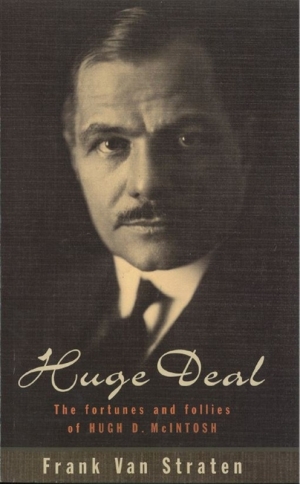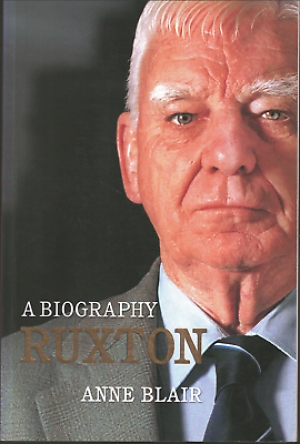Peter Ryan
Peter Ryan reviews 'The Australian Centenary History of Defence, Vols. I–VII', edited by John Coates and Peter Dennis
This handsome set of volumes – this ‘library’, it might almost be said – is one of the finest large publishing projects undertaken in Australia over recent years. Dedicated to ‘those who have served in the defence of Australia, 1901–2001’, it is brought triumphantly to a conclusion by the recent issue of its Volume VII, An Atlas of Australia’s Wars. This climactic volume, lying open on your desk, spreads eighty centimetres wide and is a splendidly presented treasury of geographical and logistical information. Now we can make better sense of, for example, the plethora of existing individual unit histories. Many of these (despite their wealth of fine detail and personal information) have baffled our broader understanding. Now we have, set out before us, the land (or the sea, or the airspace) where the fighting took place, and can appreciate reality in a new dimension.
... (read more)Mark McKenna reviews 'History Wars: The Peter Ryan–Manning Clark controversy' by Doug Munro
It was one of the most notorious episodes in the annals of Australian publishing. In September 1993, writing in Quadrant, Peter Ryan, the former director of Melbourne University Press (1962–87), publicly disowned Manning Clark’s six-volume A History of Australia. Clark had been dead for barely sixteen months. For scandalous copy and gossip-laden controversy, there was nothing to equal it, particularly when Ryan’s bombshell was dropped into a culture that was already polarised after more than a decade of the History Wars.
... (read more)Peter Pierce reviews 'Lines of Fire: Manning Clark and Other Writings' by Peter Ryan
This collection of Peter Ryan’s writings, Lines of Fire, is no grab-bag of oddments. The pieces included here are given an impressive unity by the author’s imposition of his presence, by his trenchancy, elegance of expression, a desire to honour the men and women of his younger days and to excoriate a present Australia in which too many people wallow in ‘an unwholesome masochistic guilt’. The finely designed cover shows a wry, ageing, wrinkled Ryan smiling benignly over his own shoulder, or rather that of his younger self, in uniform, in late teenage, during the Second World War. What happened in between is richly revealed in the elements of Lines of Fire.
... (read more)Sue Ebury reviews 'Final Proof: Memoirs of a publisher' by Peter Ryan
‘Thank God I have done with him!’ – the words uttered by Dr Johnson’s publisher when he received the final proofs of the dictionary from its author – might well have been Peter Ryan’s own in 1988 when Manning Clark confessed that he had changed his mind about the character and career of Robert Menzies. No longer did Clark consider him an ‘imperialistic booby’. Melbourne University Press was about to publish the final volume of Clark’s History of Australia, and the book was printing as the author confessed that he no longer believed his own, uncomplimentary text. This, for Clark’s publisher, Peter Ryan, was ‘the last straw’ in their tumultuous publishing relationship of twenty-six years. He boycotted the launch, and five years later he let fly in the pages of Quadrant with a critical attack on the press’s most profitable author, his methodology, and his work.
... (read more)Peter Ryan reviews ‘Huge Deal: the fortunes and follies of Hugh D. McIntosh’ by Frank Van Straten
No Australian native son blazed brighter than Hugh D. McIntosh (1876–1942). Here is a lively biography of a Sydney boy who left school aged seven and rose to be the Squire of Broome Park in Kent, the stately seat of Lord Kitchener. McIntosh – contender though he became for a seat in the House of Commons – remained always an Australian. At Broome Park, a cricket pitch was laid down with ten tons of Australian earth, imported so that the visiting Australian Test team might practice on their native soil. The McIntosh ‘coat of arms’ came not from the College of Heralds but from the studio of his old mate Norman Lindsay. The very doctor who delivered him at birth was Charles Mackellar, father of that Dorothea who celebrated our ‘sunburnt country’.
... (read more)In a long and interesting life, Peter Ryan has been especially fortunate in getting to know quite a few influential Australians and some little-known but unforgettable characters. Brief Lives offers pen portraits of fifteen of them, all but one of them male. The solitary female, Ida Leeson, had the distinction of being the ‘presiding genius of the world-famous Mitchell Library’, held the rank of army major in World War II, and was perhaps regarded as an honorary male in the Directorate of Research and Civil Affairs (DORCA), a rather peculiar army unit where Ryan met her in 1944.
... (read more)For more than twenty years, Bruce Ruxton was Victorian president of the RSL, and one of the best-known names in Australia. ‘Best-known’ does not necessarily mean ‘best-loved’; few public figures cut so clear a chasm between supporters and detractors. Knowing Ruxton well over many years, let me declare that on the day I meet another man who equals him for kindness of heart and dedication to the welfare of others, I’ll take my hat off to the second man, too.
... (read more)Note especially the last word in the subtitle – ‘travel’. This book is not, or not chiefly, about strategy and battles. It is about getting to the war, or passing through an operational area and (with luck) getting home again; it is about visiting war cemeteries, battlefields and memorials, or revisiting them, sometimes decades later.
You may think this a wispy and slender thread upon which to string 350 pages of book. I thought so myself when I picked it up, and the misgiving recurred several times during the perusal. (Since a peacetime visit to Auschwitz is neither military nor Australian, Lily Brett’s piece seemed to have strayed in by mistake.) But the thread held – just – and I am grateful to the editors for teaching me much that I didn’t know, or had not understood.
... (read more)Peter Ryan reviews 'Australia’s Boer War: The war in South Africa 1899–1902' by Craig Wilcox
Ever since Federation, Australians have heard of the Boer War, as they have heard of the Wars of the Roses. As to deep understanding, they have as much about the one war as about the other. As a ‘Matric’ student in 1939, I had for my Commercial Practice teacher a Boer War veteran – lean, tall, bowlegged – every schoolboy’s image of our horsemen who had taught the Empire’s enemies such a lesson in South Africa. Beguiled by eager juvenile diversionists, he would treat us to ten minutes of soldier anecdotes, straight from his saddle forty years earlier.
... (read more)








